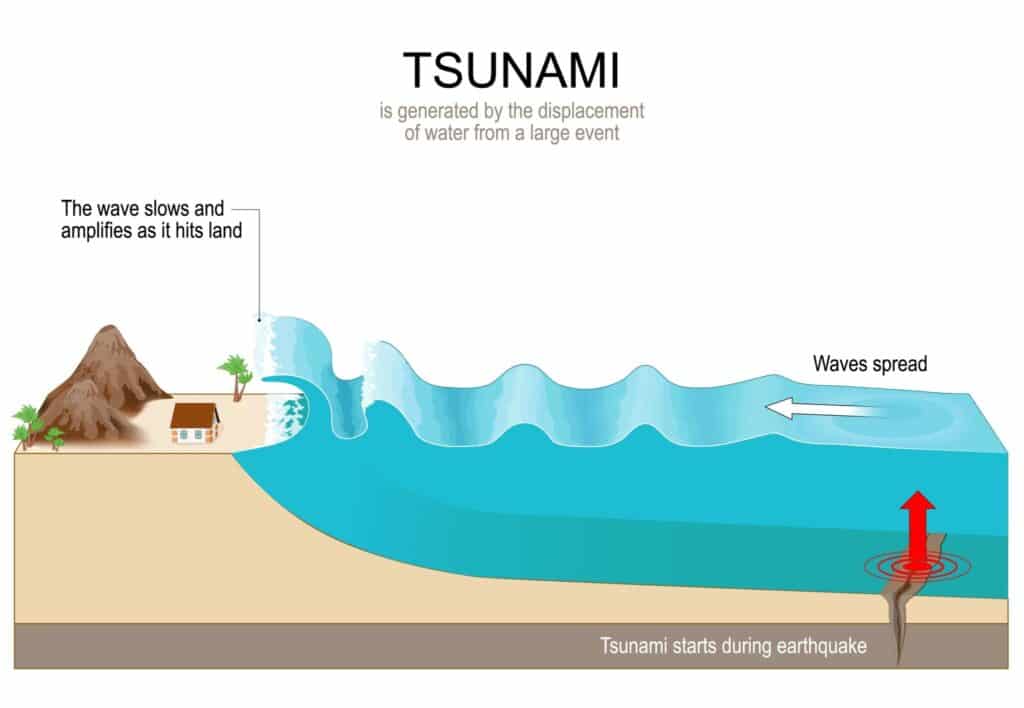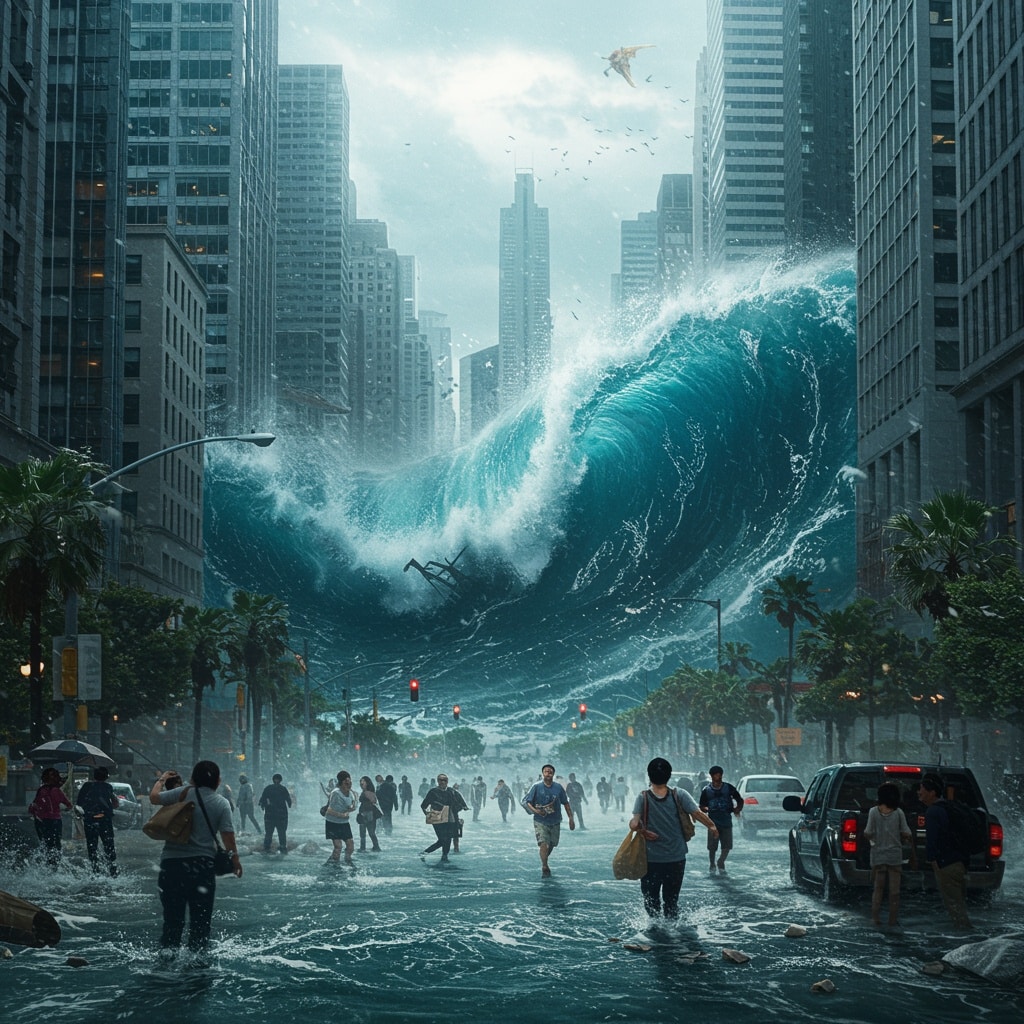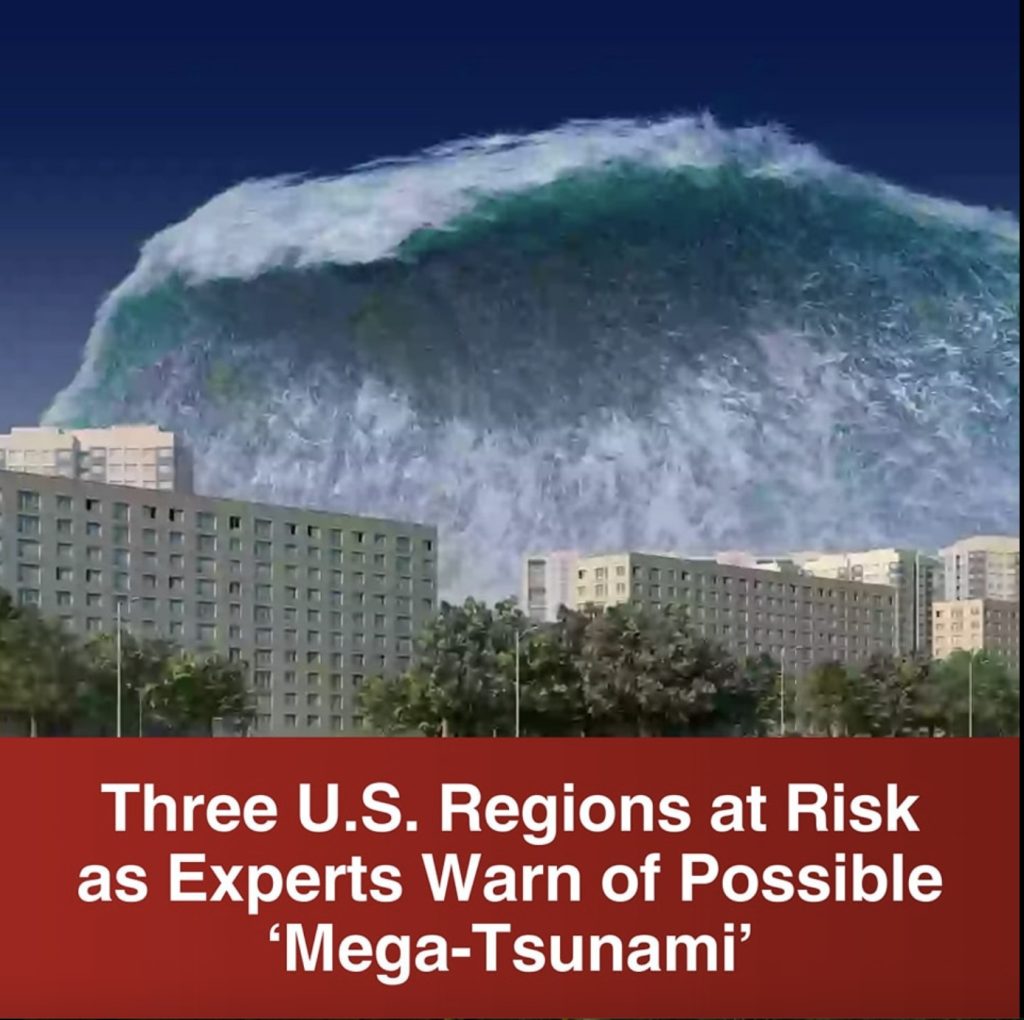Scientists Warn of Potential Mega Tsunami Threat on the U.S. West Coast
Imagine waking up to see a wall of ocean water racing toward your home. For communities across the West Coast, Alaska, and Hawaii, that chilling scene could one day become reality — and sooner than many think.
A Sleeping Giant: The Cascadia Subduction Zone
The threat stems from the Cascadia subduction zone, a massive fault line stretching from Northern California to British Columbia. It lies where the Juan de Fuca tectonic plate dives beneath the North American plate — and when it moves, it can trigger massive earthquakes and devastating tsunamis.
A new study published in the Proceedings of the National Academy of Sciences reveals that an earthquake in this zone could cause coastal land to sink by up to 6.5 feet, expanding flood-prone areas dramatically.

“The expansion of the coastal floodplain following a Cascadia subduction zone earthquake has not been previously quantified,”
said **Tina Dura**, lead researcher and assistant professor at **Virginia Tech**.
“The impacts to land use could significantly increase the timeline to recovery.”
Why a Mega Tsunami Could Be Devastating
While tsunamis are often associated with distant ocean quakes, the Cascadia zone is close to home — and if triggered, could send waves hundreds of feet high crashing into U.S. coastlines within minutes.
These mega tsunamis are far more powerful than typical tidal waves. Driven by massive crustal shifts, underwater landslides, or volcanic collapses, they travel at speeds of up to 500 miles per hour, leveling everything in their path.
And the risk is rising. Experts estimate a 15% chance of a magnitude 8.0+ earthquake from Cascadia within the next 50 years.
“Cascadia is a unique place,” Dura noted. “Most estuaries have a community in them, and they’re all right in the zone of subsidence.”
The Pacific Northwest Isn’t Alone
The threat doesn’t stop at Washington and Oregon. Alaska and Hawaii also face increasing risks.
In Alaska:
-
Glacial melt is destabilizing mountainsides, increasing the likelihood of landslides.
-
Underwater rock collapses can trigger tsunamis with little warning.
In Hawaii:
-
The islands have a history of mega tsunamis, including one 105,000 years ago that sent a 1,000-foot wave over Lanai.
-
Volcanic instability, especially from Mauna Loa and Kilauea, continues to pose serious risks.
Kilauea was actively erupting as recently as May 2025, a reminder of how volatile the region remains.
All Part of the Ring of Fire
The Ring of Fire, a massive horseshoe-shaped zone circling the Pacific Ocean, is home to 90% of the world’s earthquakes. It includes fault zones from Japan to Chile — and the Cascadia subduction zone is one of its most volatile segments.
The last major quake there? January 26, 1700 — over 300 years ago. According to geologists, the area is long overdue for another rupture.
What You Can Do to Stay Safe
While the science is sobering, preparation can save lives. Experts recommend:
-
Knowing your tsunami evacuation routes
-
Signing up for local emergency alerts
-
Creating a family disaster plan
-
Keeping an emergency go-bag with essentials like water, food, first aid, and backup power
-

Though scientists can’t predict exactly when a mega tsunami will strike, they agree on one thing: it’s not a matter of if, but when.
If you live along the West Coast, in Alaska, or on the Hawaiian islands, now is the time to take this risk seriously. Understanding the danger posed by the Cascadia subduction zone and the broader Ring of Fire isn’t panic — it’s preparation.
Stay informed. Stay prepared. Stay safe.


